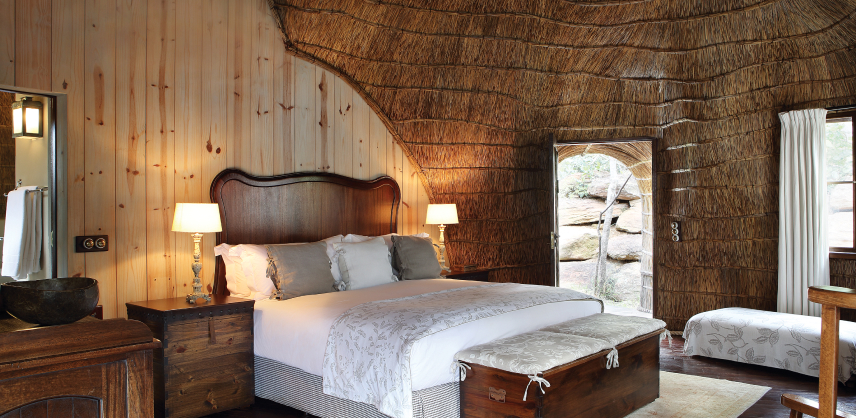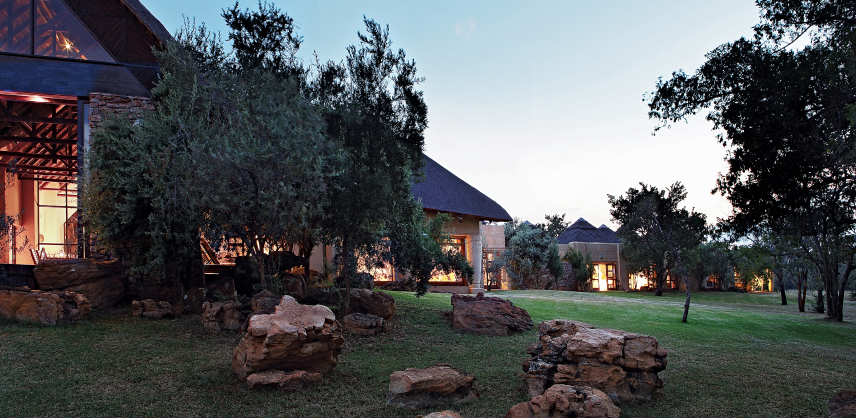Book directly with ease.
Upon going on your first safari on Shambala, one often wonders what the animals are getting up to whilst you’re enjoying a sumptuous breakfast on the front deck of the lodge looking over the calmly flowing river. There are several interesting happenings that occur out in the bush on a daily basis without us being aware of it, and this makes it so much more exciting to go on a game drive each time, as you get the opportunity to witness such occurrences. Things like social interactions amongst a pride of Lions, hierarchy disputes in a troop of Baboons, social organization in a harem of Impala; these are all important behaviours to keep the balance of life in the wilderness. When you analyse it more closely, you’ll realize that these behaviours aren’t that different from human interactions; they’re just more visually represented instead of verbal. To try and see what the animals are keeping themselves busy with, you’ve got to try and find them first and that’s what we did as we set off on a game drive. We came into a woodland area when we discovered one of the most beautiful antelopes. Two incredible Sable antelope were running along the road at quite the speed, one behind the other. Sables are beautifully coloured antelope with a dark outer skin and a white contrast on the stomach area. Stunning white and black lines as facial markings make you want to have a closer look through the binoculars. We pulled over to the side of the road and looked on as the two ruminants continued at their galloping pace, and we immediately thought something must be going on. We couldn’t decide whether these animals were being chased by something like a predator or whether they were spontaneously deciding to have a race. Sables are really majestic animals and when they stand straight with their heads and tails up they look like horses - but with an impressive set of horns that curves backwards. While most were observing the beauty of this royal antelope whilst they were running beside us, I noticed that the rest of the herd was standing a bit further on, not too far in the distance. This was when I realized that these animals are not being chased by a predator, but instead the one is chasing the other. Sables normally occur in herds of up to about 20 individuals, and they are known to have a matriarchal social structure, meaning that there is a dominant female that is the leader. There is one adult male in such a herd known as the bull. Adult males and females both have horns, and they are usually distinguished from one another by colour as males are darker black in colour and females more brown to dark brown. When numbers expand some groups or individuals are expelled from the herd to form a new herd. In this scenario, I started explaining that this may be one such incident, where the female is being expelled because her condition is weaker than the rest of the herd, and the numbers have exceeded capacity. We now noticed the distinct difference in colour of the two running Sables. The bull Sable was the one behind, he is darker black, more robust with larger horns and is chasing the female out of the herd. But she, dark brown in colour with a smaller set of horns, was always just a bit faster and kept circling back not to go too far away from the herd that she still wants to be associated with. As they were now moving out of our view we slowly followed behind and caught up to the rest of the herd. The female tried to blend in with other members of the herd hoping that the male won’t recognize her. But he was too sharp, and quickly continued his pursuit of expelling the female Sable. He then also received some help from the more dominant female of the herd, as she too now started a gallop toward the weaker female. The chase continued, and we started feeling a bit anxious, wondering if the bull Sable was going to injure, or even kill the female in his pursuit to banish her from the herd. Then something really interesting happened. Close by to where the antelope were situated is a watering hole, where animals usually go for a drink of water during the heat of the day. The female being chased was now showing signs of fatigue and becoming rather tired quickly, and so in her desperate attempt to get away from her pursuers she jumped into the pond of water and stood in the middle, with the water reaching her midriff. It was a tactic that we never thought would work, as we suspected the pursuers might go in after her as well. Nevertheless she stayed firmly still in the middle of the waterhole, and the pursuers were stopped in their tracks, refusing to brave the water. They believed her to be far enough, and returned to their area of grazing where the other members of the herd were, leaving the weaker female all on her own. Taking a sigh of relief we all commented on the situation, stating that she was at least fortunate to get away unharmed and with enough resources nearby to survive for the coming days. Though the female Sable is now going to have to find a new herd to mingle with, or brave the odds of the wilderness on her own. We continued our drive and admired the beauty of these antelope, and how intricate their social structure and organization is. There is much that happens in animal society without us being aware. Ranger Sean Jones Shambala Private Game Reserve



